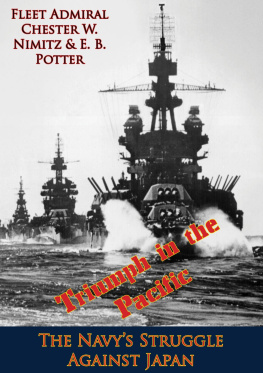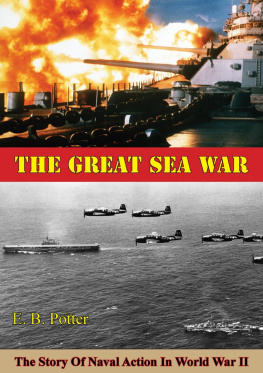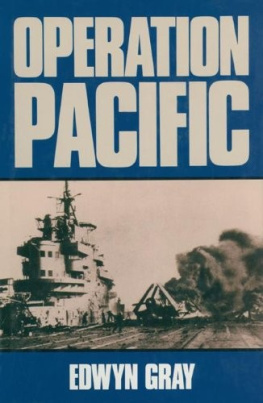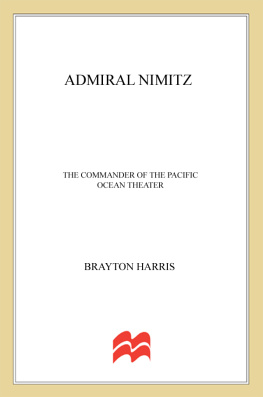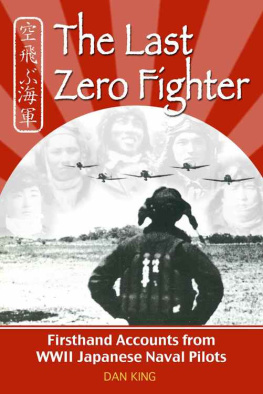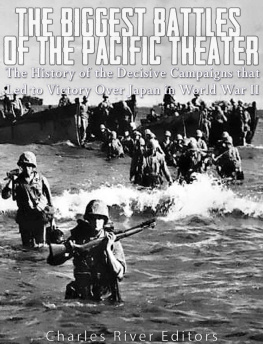

This edition is published by PICKLE PARTNERS PUBLISHINGwww.pp-publishing.com
To join our mailing list for new titles or for issues with our bookspicklepublishing@gmail.com
Or on Facebook
Text originally published in 1963 under the same title.
Pickle Partners Publishing 2016, all rights reserved. No part of this publication may be reproduced, stored in a retrieval system or transmitted by any means, electrical, mechanical or otherwise without the written permission of the copyright holder.
Publishers Note
Although in most cases we have retained the Authors original spelling and grammar to authentically reproduce the work of the Author and the original intent of such material, some additional notes and clarifications have been added for the modern readers benefit.
We have also made every effort to include all maps and illustrations of the original edition the limitations of formatting do not allow of including larger maps, we will upload as many of these maps as possible.
TRIUMPH IN THE PACIFIC;
THE NAVYS STRUGGLE AGAINST JAPAN
EDITED BY
E. B. POTTER
AND
FLEET ADMIRAL CHESTER W. NIMITZ, U.S.N.
TABLE OF CONTENTS
Contents
PREFACE
While taking full responsibility for errors of fact and interpretation, the authors wish to express their gratitude to all who have helped them to complete this work.
The following officers reviewed portions of the typescript of the original version and provided the authors with detailed comment and marginal notes: the late Fleet Admiral William F. Halsey USN (Ret.), Admiral Raymond A. Spruance USN (Ret.), Admiral Thomas C. Kinkaid USN (Ret.), Admiral Robert B. Carney USN (Ret.), Lieutenant-General Julian C. Smith USMC (Ret.), Vice Admiral Charles A. Lockwood USN (Ret.), Vice Admiral Stanton A. Merrill USN (Ret.), and Captain Ralph Weymouth USN.
So many persons have been helpful in supplying information that a comprehensive listing is impossible, but prominent among them are General of the Army Douglas MacArthur USA, Admiral Arleigh A. Burke USN (Ret.), the late Vice Admiral Eliot H. Bryant USN (Ret.), and Rear Admiral Walter C. Ansel USN (Ret.).
Professor Vernon Tate, Head Librarian of the United States Naval Academy, his predecessor, the late Louis H. Bolander, and their staffs have been unstintingly helpful, as have Rear Admiral Ernest M. Eller USN (Ret.), Director of Naval History, and his staff.
The charts and diagrams were drawn, largely from the authors sketches, by Mr. William M. Shannon and Mr. Albert Jones, both of the United States Naval Academy. In some instances one source has been the primary basis for an illustration. The authors therefore wish to acknowledge these sources for the illustrations appearing on the following pages: page 4, adapted from Allan Westcott, ed., American Sea Power since 1775 (Chicago: J. B. Lippincott Company, 1952); pages 12, 30, 82, and 83, adapted with the permission of the author from Samuel Eliot Morison, History of United States Naval Operations in World War II, vols. III, V, and VIII (Boston: Little, Brown & Company, 1948-53); and page 60, adapted from Philip A. Crowl and Edmund G. Love, Seizure of the Gilberts and Marshalls (Washington: Office of the Chief of Military History, Department of the Army, 1955).
Much of the material of Triumph in the Pacific is based upon original research, particularly among official documents. Some is based on correspondence and interviews with participants. A great deal, however, is drawn from the numerous histories and memoirs of World War II already published. Of these, History of United States Naval Operations in World War II, by Samuel Eliot Morison, has proved most useful.
The authors and Admiral Nimitz wish to emphasize that Triumph in the Pacific is in no sense official history. The opinions expressed are the writers own.
E.B.P.
1.The Japanese Advance
For sheer audacity the Japanese raid on Pearl Harbor, December 7, 1941, is almost without parallel in naval warfare. It required conducting a carrier force undetected across 3,500 miles of open sea to within striking range of Americas most powerful Pacific base. For it to succeed, the Americans had to remain uninformed and unprepared, their fleet in the harbor and their planes on the ground, until the attack was upon them. Incredibly enough, that is exactly what happened.
Yet the United States had had ample warning. The Americans, having broken the Japanese diplomatic code, were reading secret Japanese radio messages. They knew that the Japanese embassy at Washington had been ordered to destroy all but one codewhich was to be used to decipher a final message. The final message, breaking off negotiations with the United States, began coming in on the eve of the attack. It was shown to President Roosevelt, who said, This means war!
In two preceding wars, against China in 1894 and against Russia in 1904, Japan had established a pattern of breaking off relations and then attacking the enemys fleet without a declaration of war. The main body of the U.S. Pacific Fleet was in Pearl Harbor. It could be attacked effectively only by carrier aircraft. Such an attack would doubtless come early in the morning so that the attacking carriers could make their final approach under cover of darkness. The decrypted Japanese message specified that it was to be handed to the Secretary of State at precisely 1300, December 7. At that time it would be 0730 at Pearl Harbor.
Admiral Harold R. Stark, the Chief of Naval Operations, saw no reason to send another war warning to Admiral Husband E. Kimmel, Commander-in-Chief of the Pacific Fleet. I hesitate to send any more, he told General George C. Marshall, Army Chief of Staff; a new one will be merely confusing. General Marshall did notify the principal Pacific bases, but the message he sent to Major-General Walter C. Short, Commanding General of the Hawaiian Department, went out by commercial radio and did not arrive at General Shorts headquarters until after the attack was over.
In the Pearl Harbor area aircraft were lined up in neat rows, making them easy to guard against sabotageand easy to destroy from the air. The emphasis was on training, not defense. On Sunday morning, December 7, all the battleships in the area were in the harbor, anchored in Battleship Rowto permit weekend liberty. Luckily the two carriers, Lexington and Enterprise, were still at sea, delivering planes respectively to Midway and Wake. An hour before the attack a destroyer reported and sank a midget submarine off the entrance to Pearl Harbor. At the same time, at the opposite end of the island of Oahu, a pair of army radar operators began plotting a large flight of planes coming in from the north. Neither of these events served to alert the defenders.
With all these warnings, why did neither Washington nor Pearl Harbor anticipate a raid on the Pacific Fleet? Mainly because American government and military leaders had their attention focused on another Japanese advance, which was in fact the main thrust. A powerful expeditionary force had been observed forming up in Japanese and occupied Chinese ports and had subsequently been reported at sea heading south. Later, American pilots reported the same or a similar force in Camranh Bay, Indo-China. On December 6, British aircraft sighted a convoy rounding the southern point of Indo-China as if headed for the Malay Peninsula.
Such a southward move had been anticipated for months. Japan had depended heavily on the United States for oil, needed to carry on her undeclared war with China. When the American government began restricting sales of oil to Japan, the Japanese made plans to assure themselves of an alternate source in the Netherlands East Indies. In July 1941, they occupied southern Indo-China. This move gave them airfields that threatened the Philippines, Singapore, and Borneo. The United States, Great Britain, and the Netherlands East Indies government countered by freezing Japanese assets. The effect was to cut off all trade between the United States and Japan, and to make it difficult for the Japanese to purchase oil or anything else anywhere.
Next page
